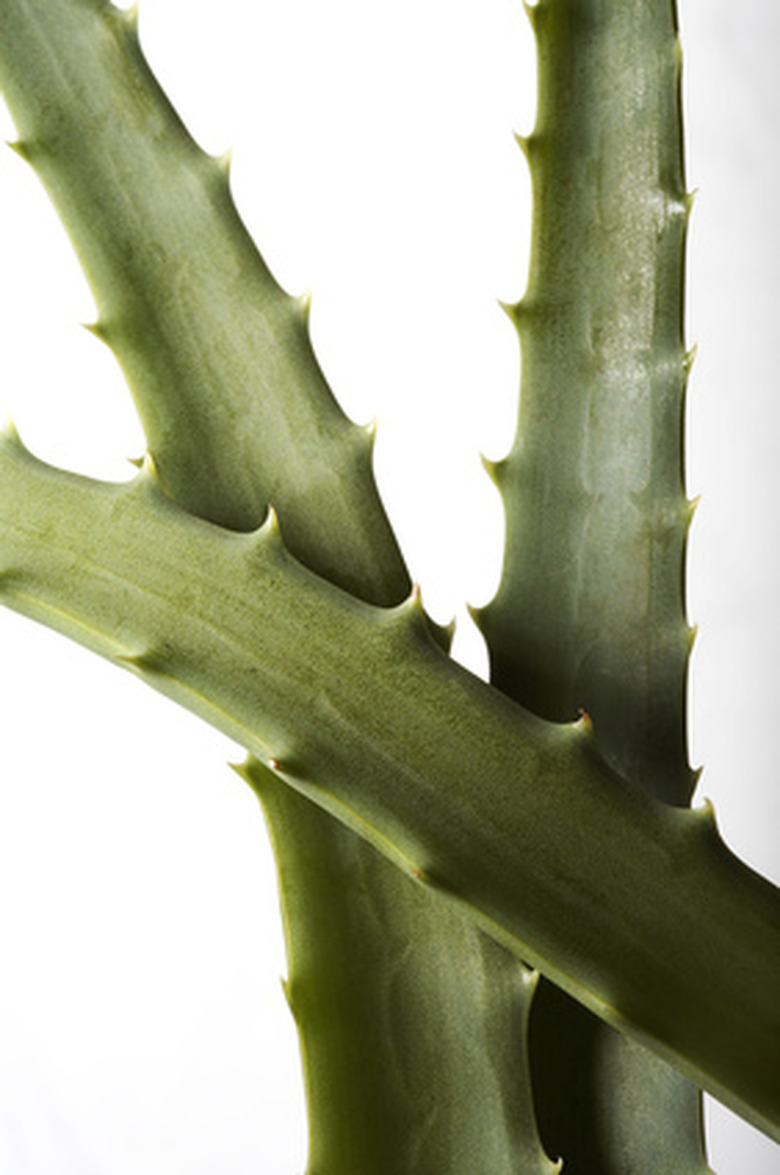Aloe Plant Disease
Aloe plants are a family of succulent plants with long, spiked leaves. The leaves store water internally, creating little need for watering. The plant is often used in xeriscaped gardens in the South and West. The gel and juice of the plant are used for topical medicinal purposes. Despite its hardy nature, the aloe plant is affected by occasional diseases.
Aloe Rust
Aloe rust is a plant fungus that affects succulent aloe plants. The fungus creates round black or brown spots on the leaves. The fungus is self-limiting, and does not spread beyond the spots that are affected.
- Aloe plants are a family of succulent plants with long, spiked leaves.
- Aloe rust is a plant fungus that affects succulent aloe plants.
Sooty Mold
Sooty mold is a fungal infection that is secondary to an infestation of aphids or mealy bugs. Aphids and mealy bugs are pests that suck moisture out of plants, and leave a clear, sticky substance called honeydew behind on the leaves. The honeydew creates a moist atmosphere, which eventually develops into sooty mold.
Basal Stem Rot
Basal stem rot is the result of cold or wet conditions. This condition leads to rotting stems. The base of the plant is usually affected. Rotted aloe tissues affected by basal stem rot turn black or reddish brown. It is possible to take a stem cutting above the rotten portion to save pieces of the plant.
- Sooty mold is a fungal infection that is secondary to an infestation of aphids or mealy bugs.
Treatment
Fungal diseases that affect aloe plants are treated with spray or powder fungicides. If the disease is caught early, the plant is usually saved. If the plant succumbs to disease, treat the soil with fungicides to prevent future plants from becoming diseased.
Prevention
Aloe fungal diseases are caused by conditions that are too wet or too cold for their nature. These diseases can be prevented by taking a few precautions. Water infrequently and only in the early morning to allow excess water to drain and evaporate. Water the soil and avoid watering from overhead. Plant aloes in areas where they receive air circulation and at least 10 hours of sunlight per day.
- Fungal diseases that affect aloe plants are treated with spray or powder fungicides.
- If the plant succumbs to disease, treat the soil with fungicides to prevent future plants from becoming diseased.
